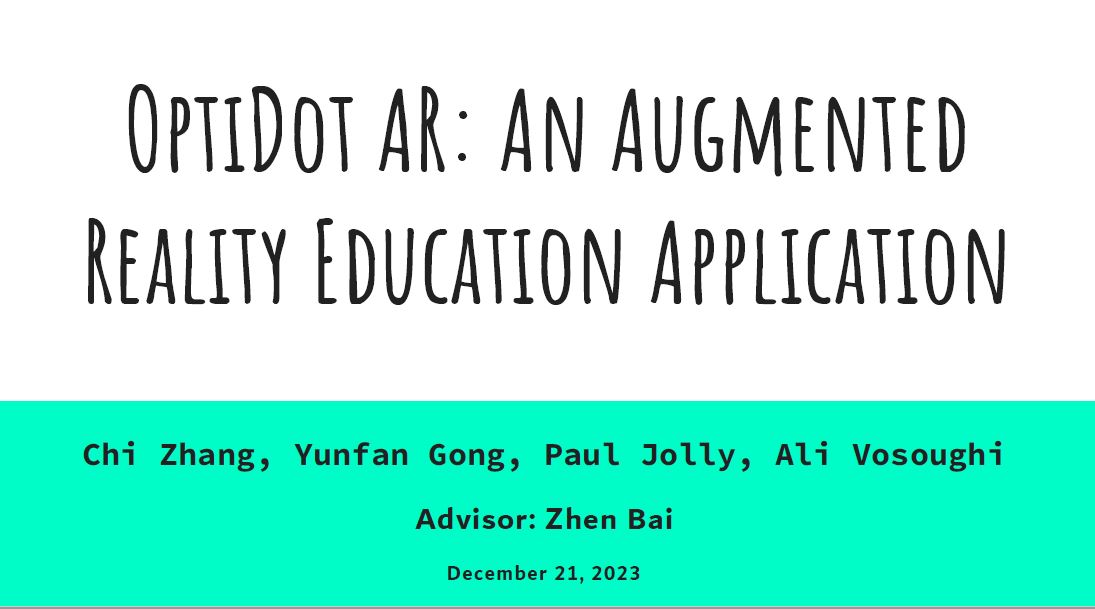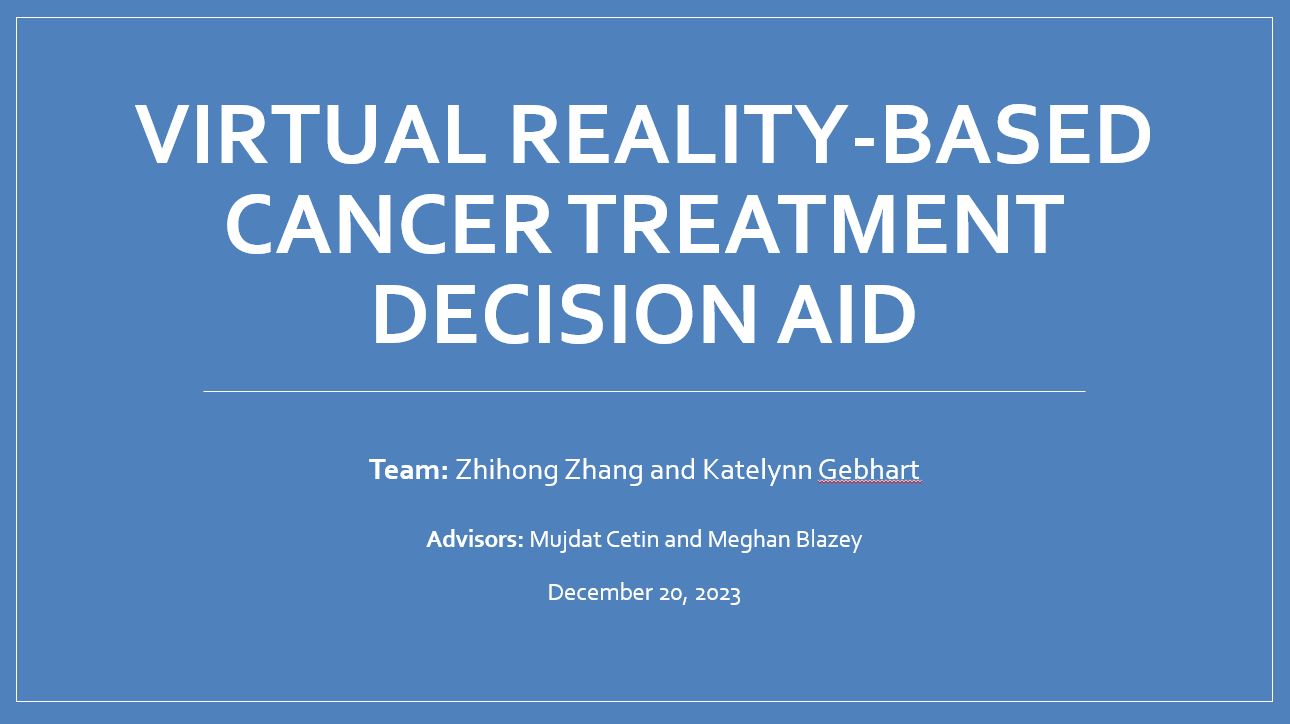NRT Trainee Team Presentations
Fall 2023 Presentation Abstracts
OptiDot AR: An Augmented Reality Educational Application
Chi Zhang, Yunfan Gong, Paul Jolly, Ali Vosoughi
Abstract
With the rising prominence of AI-related jobs, there is a growing consensus on the necessity of integrating AI literacy into education, akin to traditional literacy skills. This study addresses the challenge faced by students without a computer science background in comprehending abstract AI principles. The research expands on OptiDot, a physical learning prototype developed by a 2022 AR/VR Training Program team, designed to enhance middle school students’ data literacy through interactive experiences with light beams, focusing on data vectors and dot products. However, pilot testing revealed issues related to lighting conditions and portability. To overcome these challenges, the project proposes a story-driven game combined with a virtual rendition of OptiDot within an AR environment to make the learning process more immersive. The project encompasses an educational plan outlining student interactions and a prototype application for initial implementation, aiming to create an engaging and effective AI literacy educational experience.

Virtual Reality-Based Cancer Treatment Decision Aid
Zhihong Zhang and Katelynn Gebhart
Abstract
Making a decision on a treatment option is a challenging process. Older adults are frequently underrepresented in cancer clinical trials due to their declining functional status or concurrent diseases (Bumanlag et al., 2022; Kanapuru et al., 2020; Parks et al., 2021; Sedrak et al., 2021). This lack of representation in clinical trials introduces uncertainties in the treatment of this population, as many treatment guidelines have been formulated based on evidence derived from these trials (DuMontier et al., 2021; Flannery et al., 2021; Mohile et al., 2018). Therefore, treatment decisions are typically made by considering several factors, such as age, the presence of aging-related conditions, patients' preferences and values, and potential treatment effects and side effects. This process is often a shared decision-making one, where patients and their healthcare providers collaboratively decide on the treatment plan. Numerous studies have shown that involving patients in their treatment decision-making process leads to higher satisfaction, better adherence to treatment, and improved quality of life.
To make an informed decision, patients need to be well-educated, thoroughly understanding potential treatment options, the effectiveness of treatment in disease control, the side effects and symptom burden associated with the treatment, and the impact of the treatment on quality of life and functional status, among other key aspects of an individual’s life. Various treatment decision aids have been developed for cancer patients to assist them in making decisions about different treatment options (Grüne et al., 2022; Todio et al., 2023; Zdenkowski et al., 2016), such as surgery, systemic therapy, radiotherapy. These decision aids take various forms, such as preprinted booklets, educational videos, and online websites. They provide educational information through text, graphics, diagrams, videos, selection lists, knowledge tests, and links to additional resources. Evidence has shown that these educational aids are well-received by patients and effectively improve knowledge while reducing decisional conflict in the decision-making process (Todio et al., 2023; Zdenkowski et al., 2016).
This study presents a VR-based treatment decision-making aid designed to support older cancer patients in making well-informed decisions. The aid enables patients to delve into symptom profiles, understand treatment experiences, and explore supportive resources related to each treatment option. The primary goal of this tool is to empower patients with the necessary knowledge for informed treatment decision-making. It also seeks to enhance confidence in treatment decision-making, mitigate decisional regret, and ultimately improve the overall quality of life for patients after cancer treatment.

